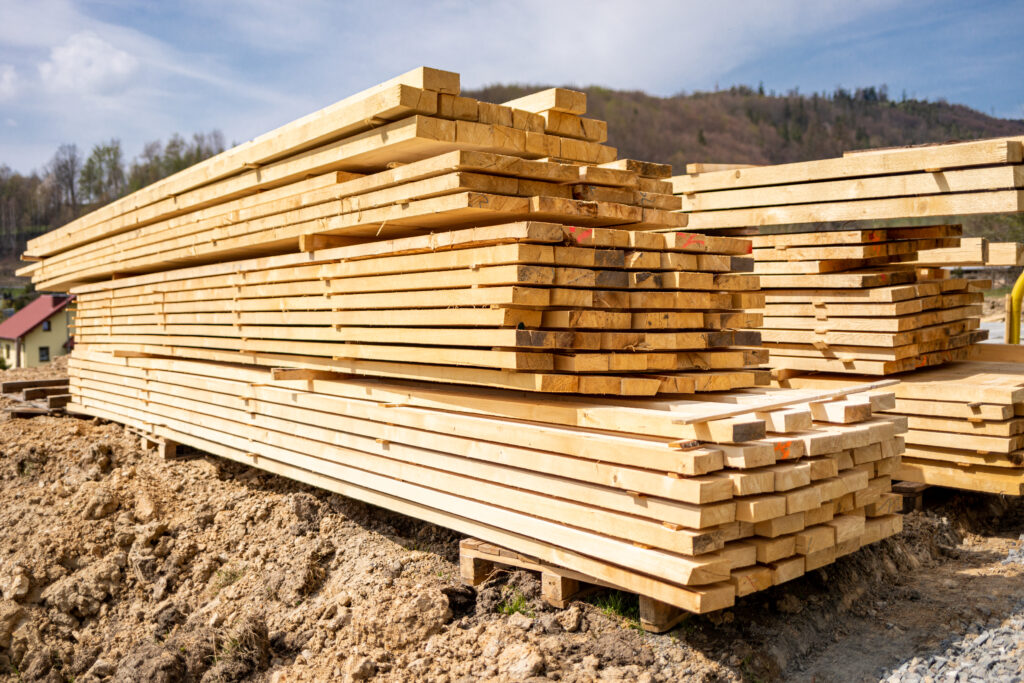
Lumber prices have experienced significant volatility in recent years, driven by a series of unique global events.
2020-2021: Pandemic Impact and Price Surge
The COVID-19 pandemic brought an unprecedented surge in lumber prices. Lockdowns and restrictions halted timber production, while remote work and low interest rates led to a boom in housing demand. These factors, combined with ongoing supply chain disruptions, led to historic highs in lumber prices, with prices reaching more than $1,600 per thousand board feet in 2021. This was a significant increase from pre-pandemic levels, where lumber was typically priced around $400 to $500 per thousand board feet.
Many homeowners and contractors felt the sting of these rising prices, especially as they took on home improvement projects or tried to source materials for new homes.
2022-2023: Price Correction and Stabilization
By late 2022, lumber prices began to stabilize after the initial surge. As mills ramped up production, supply chains began to recover, and the housing market showed signs of slowing due to rising mortgage rates, lumber prices saw a significant drop. In 2023, prices ranged between $350 and $500 per thousand board feet, a much more manageable price compared to the peak in 2021.
However, even as lumber prices came down, the industry continued to experience some fluctuations due to factors like labor shortages, higher operational costs, and occasional disruptions in supply chains.
2024: Lumber Prices Today
As of 2024, lumber prices have stabilized further, hovering between $400 to $600 per thousand board feet. While these prices are higher than pre-pandemic levels, they represent a more sustainable market for both builders and consumers. However, prices are still subject to fluctuation based on factors like:
• The ongoing demand in the housing market: While the housing market has cooled compared to 2021, it is still relatively active, particularly in suburban and rural areas.
• Seasonal changes in production: If there’s an increase in demand during the spring and summer months, lumber prices may temporarily rise.
• Global supply chain issues: Ongoing global supply chain challenges, including shipping delays and rising fuel costs, could continue to put pressure on lumber prices.
How to Save on Lumber in 2024
If you’re planning a construction or renovation project in 2024, here are some strategies to help manage lumber costs:
1. Buy in Bulk: If you’re planning a large project, buying lumber in bulk can save you money. Many suppliers offer discounts for large orders, and buying early may allow you to lock in lower prices before a seasonal surge.
2. Plan Ahead: Given the volatility in lumber prices, it’s important to plan your purchases ahead of time. Waiting until the last minute to buy lumber can lead to paying a premium during high-demand periods.
3. Look for Alternative Materials: While lumber is the go-to material for many projects, there are alternatives like steel, engineered wood products, and concrete that might be more cost-effective in certain situations.
4. Consider Used Lumber: Salvaging reclaimed wood or purchasing used lumber can significantly reduce material costs, especially for non-structural elements like fencing, decking, or furniture projects.
5. Shop Around: Prices can vary from one supplier to another, so it’s a good idea to compare quotes from different local hardware stores, lumber yards, and online retailers.
Conclusion
Lumber prices can be unpredictable, making it essential to stay informed about the factors that influence costs. While 2024 seems to offer a more stable pricing environment compared to the pandemic-driven price hikes of previous years, lumber prices are still subject to fluctuation due to supply chain issues, seasonal demand, and global events. By understanding these trends and planning accordingly, you can make more informed decisions for your construction projects, whether you’re building a new home, renovating an existing structure, or taking on a DIY project.
If you are a builder, contractor, or homeowner, keeping an eye on lumber price trends will help you manage costs and avoid unexpected financial surprises. Happy building!
